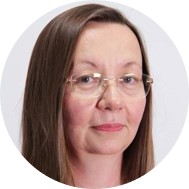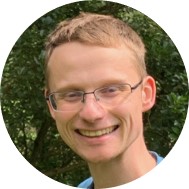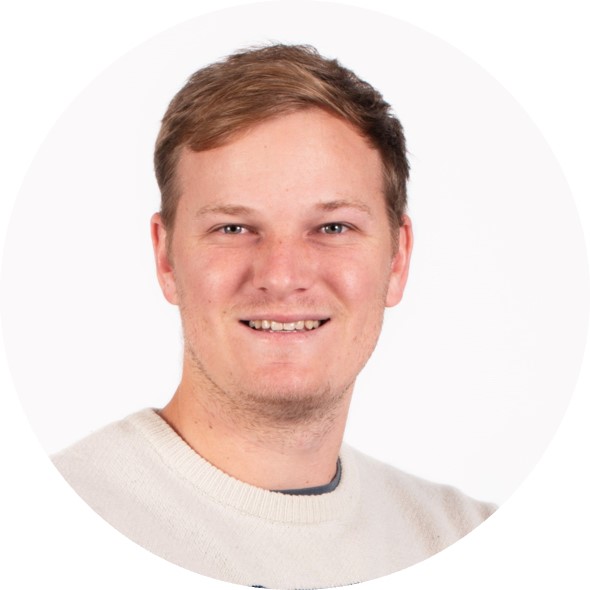New KE Catalysts for Humanity announced
12 Nov 2024
The ICMS is pleased to announce our new cohort of KE Catalysts for Humanity! Through Round 2 of this funding scheme, we are delighted to be supporting eight academics who will be working in partnership with a range of external partners. All projects align with the overarching theme of the ICMS Mathematics for Humanity programme, by endeavouring to contribute to the betterment of humanity and address positive societal change.

Leveraging Spatial Statistical Models for Glaucoma Triage
Gabriela Czanner, University of Southampton
Partner: Liverpool University Hospital Foundation Trust
This new knowledge exchange partnership between the University of Southampton and Royal Liverpool University Hospital (clinical collaborator Dr Neeru Vallabh) aims to improve the quality and efficiency of referrals to hospital eye services from community optometry services for suspected glaucoma cases. We plan to leverage the hospital data, data from previous collaborations, our previously developed robust spatial models as well as our current development of risk and uncertainty quantification and communication framework, to enable better patient outcomes via faster and more accurate triage, thus ensuring that patients receive the timely care they need.

Transforming Scottish Avalanche Forecasting
Ian Durbach, University of St Andrews
Partner: Scottish Avalanche Information Service
Public avalanche forecasts are published daily during winter in many countries, including Scotland. These forecasts are made by a team of expert forecasters who combine daily field observations about the current snow conditions with a range of other information, including the output of mathematical models. In partnership with the Scottish Avalanche Information Service, our project aims to develop new statistical models to better understand how avalanche forecasts are made; to understand how avalanches, when they occur, affect later forecasts; and to use this understanding to design interventions that improve forecasting processes.

Developing the discrete element method for improving battery production
Ben Goddard, University of Edinburgh
Partner: Altair EDEM
Lithium batteries are essential in many modern technologies; they are key in electric vehicle power, solar power storage, alarm systems in remote locations, mobility equipment, etc. When linked to renewable energy sources, they can drive the revolution in green transport and enhance the lives of people in developing countries and areas with less well-established power networks. A major bottleneck in such applications is battery performance and lifetime, which is intimately linked to their manufacturing processes, especially of battery electrodes. Working collaboratively with Altair EDEM, this project will use mathematics as the foundation to develop improvements to the Discrete Element Method, allowing the modelling and optimization of battery electrode production. This will ultimately increase the sustainability not only of battery technology, but also of the mathematical and computational methods used to model it.

Safe use of AI for emulation in healthcare with application to diagnosis of osteoporosis using standard X-rays
Sam Jackson, Durham University
Partner: IBEX Innovations
The global ageing population and associated risk of fractures pose significant challenges for healthcare providers, patients and the economy, with the worldwide hospitalisation burden of osteoporotic fractures greater than that of heart attacks, stroke and breast cancer. Current diagnosis of osteoporosis requires specialist and expensive DXA scans. We are combining statistical and artificial intelligence (AI) tools to assess bone density for diagnosis of osteoporosis from standard X-ray images, which would not only make diagnosis both affordable and widely-accessible, but also ensure osteoporosis could be opportunistically screened for whenever a patient has a bone scan for whatever reason. By substantially increasing diagnosis of osteoporosis before fractures occur, cheap and painless preventative treatment can be prescribed. Consequently, costly and painful fractures and operations will be avoided, improving patient outcomes and reducing healthcare costs for providers like the NHS.

Improved Object Characterisation for Identifying Buried Threat Objects using Metal Detection
Paul Ledger, University of Leicester
Partner: The HALO Trust
The humanitarian clearance of landmines is a huge challenge. It is estimated that there are at least 110 million active landmines in place across the world and it is estimated that it would take £19 billion and over 1,000 years to clear them using current technologies, which include metal detection and ground penetrating radar. Some “minimum-metal” anti-personnel landmines are predominantly plastic and contain only small amounts of metal (e.g. the percussion cap and spring), which adds further challenges to discriminating them from background metallic clutter. The aim of this project is to build a new partnership with The HALO Trust with a view to improving the characterisation of buried metallic threat objects, such as landmines, that can be embedded in the next generation of metal detectors.

Turbo-charging the gift economy through geospatial optimisation
Clement Lee, Newcastle University
Partner: Freegle
Smartphone applications make it ever so easy to find household items that match your needs. They have not only benefited second-hand platforms but also gift economies, where users essentially donate items to others in a targeted manner. However, the item feed on these apps is usually limited to the "community" to which the user belongs, and the hard and arbitrary nature of community boundaries makes the item matching suboptimal. In this project, we examine the relationship between donations and the user attributes, take into account the population density and the level of economic deprivation at the user's location, and ultimately optimise the relevant neighbourhood of individual users.

Strategies to locate emergency medical facilities in a rural environment
Kit Searle, University of Edinburgh
Partner: Médecins Sans Frontières
Médecins Sans Frontières (MSF), also known as Doctors without Borders, is an international humanitarian organisation providing high-quality medical care in challenging settings in more than 70 countries. To provide high-quality medical care, they employ Geographic Information System (GIS) technology in the form of an online accessibility model to determine the physical accessibility of their healthcare facilities to the local communities. This means that for a given populated area, the accessibility is measured in how quickly an individual in that location is able to visit MSF’s healthcare facilities such as mobile clinics, vaccination sites, and community health posts. The type of data returned by the model provides an opportunity to incorporate cutting-edge geospatial analysis methods within rich and large-scale facility location problems to assist decision makers at MSF in determining where to locate emergency medical facilities.
 Upstream insights to downstream benefits: The impact of mathematical analysis on flood risk management and industry
Upstream insights to downstream benefits: The impact of mathematical analysis on flood risk management and industry
modelling practice
Phil Trinh, University of Bath
Partner: JBA Trust
Flooding is one of the most critical climate-related risks in the foreseeable future, and involves some of the most challenging multi-scale and multi-physics problems in engineering, physics, mathematics, and data science. To address the challenges, scientifically robust models are vital for the assessment of flood risk scenarios and development of adaptation policies. Indeed, such tools are used to establish confidence in policy decisions, influencing billions of pounds of public investment with far-reaching societal consequences. This project will initiate a collaboration with JBA Trust, an industry-based charity whose aim is to improve societal resilience to environmental risks. The aim is to conduct a forensic investigation of hydrological models and to uncover some of the fundamental mathematical properties of such models. Equally important in the project is the knowledge exchange and industrial perspective, which will seek to better understand the role and impact of mathematical analysis on industry practice.
